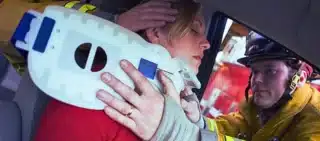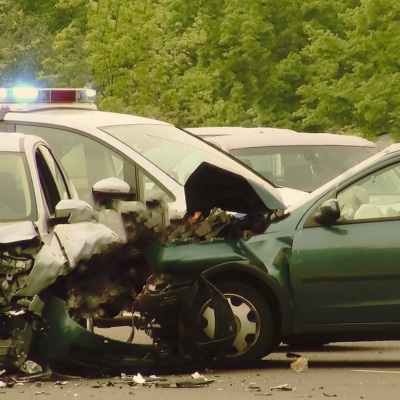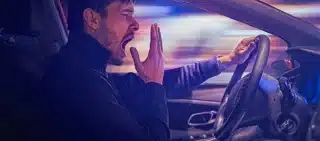
What to Do If You’re Injured in a Car Accident While Working in Illinois Work-related car accidents are common. Between...


Whose insurance pays in a multi-car accident? The negligent driver’s insurance company will be responsible for damages after a multi-car accident. If multiple drivers are at fault, their insurance companies may contribute to the full amount of damages, depending on their percentage of fault. However, determining liability in a multi-car accident can be complex because more than one driver may have acted negligently, forming a chain reaction where other cars are hit from multiple directions.
That said, you will need enough evidence to identify the cause of the multi-vehicle collision and prove fault. A multi-vehicle car accident attorney in Bloomington can help assign liability, file a claim, and handle negotiations with insurance companies to ensure you receive fair compensation for your losses.

Determining liability in a multi-vehicle collision requires a careful examination of all available facts. If one or multiple parties are found to be at fault for the accident, then their insurance companies will bear the financial responsibility.
In multi-car crashes, liability rests on the driver who was negligent in the accident. Negligence occurs when a driver does not meet his or her “duty of care,” which is to drive in a manner that does not put other road users in danger. When a driver breaches that duty of care, he or she can be found negligent.
For example, car A stops quickly due to a fast change in the normal traffic ahead. Two cars (car B and car C) behind car A slam on the brakes just in time to avoid a collision with the car in front of them. Car D wasn’t paying attention and hit car C, causing car C to slam into car B, which then collided with car A. In this case, car D was at fault because the driver wasn’t paying attention and caused all the other cars to move forward after braking.
But if car B, C, and D weren’t paying attention and slammed into each other, they would all be responsible for the cars they rear-ended. Car A stopped in time to prevent a collision and did not hit anyone, so they are not at fault.
To determine liability, law enforcement, insurance companies, and attorneys conduct their investigations and take details of each car, its position, the driver, and road and weather conditions. They may interview drivers, witnesses, and passengers involved in the accident. Often they may examine dash cam footage, video recordings from nearby CCTV cameras, and photographs of any damage. As the evidence piles up, the officers use the information to piece together the events until they can decide what and who caused the chain of reaction in the multi-car accident.
Insurance adjusters also look into accident details to validate claims made by one or more drivers. The adjuster reaches out to those involved to get more information before coming to a decision. The parties involved will share evidence that proves fault or no fault.
If you’re involved in a multi-car accident in Bloomington, IL, take pictures of your vehicle and the accident scene once it is safe to do so. Try to collect as much information as you can about the drivers because your attorney or insurance company will likely want to contact them with questions.
It’s also important to immediately visit a doctor, even if your injuries are minor, or you don’t feel any obvious pain. Some car accident injuries might not be felt until days or weeks after the accident. The decision to seek medical attention could prove pertinent in a future personal injury claim or lawsuit.
When determining whose insurance pays in a multi-vehicle collision, Illinois follows the “at-fault” system. The driver who is found to have acted negligently and caused the accident is responsible for compensating the victims for their accident-related losses and expenses. The money paid to accident victims is known as damages and comes in the form of a one-time settlement claim or jury verdict.
That said, there are three ways to get compensation from insurance companies after a car accident in Illinois:
Since multiple drivers may be at fault, each driver’s insurance company will pay based on the driver’s percentage of fault. This is based on the principle of comparative negligence. For example, if one driver is found to be 55% at fault and another driver takes the remaining 45% of the blame, the driver with the most fault's insurance will pay based on the percentage of fault. If the plaintiff is found to have contributed to the incident, say by 25%, the most he or she can recover in the claim is 75% of the awarded damages. The percentages will fluctuate if there are more parties involved.
Multi-car accidents often stem from a few common causes. These include:
The decision to consume alcohol or drugs and operate a vehicle often contributes to traffic accidents. Between 2014 and 2018, intoxication was blamed for about 30% of all car accidents, according to the NHTSA. A 5% increase in alcohol-related traffic fatalities was reported between 2020 and 2022. Reduced reaction time, poor vision, and poor decision-making caused by drunk driving lead to serious DUI accidents. Intoxicated drivers are more likely to engage in reckless behavior such as running a red lighting driving the wrong way, and tailgating.
Distracted driving is a form of recklessness that involves a driver taking the safety of everyone on the road for granted. Instead of focusing on the road, his or her attention is given to the phone, radio, passengers, pets, visual media, or GPS.
In 2020, more than 3,100 traffic-related fatalities involved distracted drivers. Whether the distraction is involuntary or deliberate, recklessness while operating a motor vehicle is frequently responsible for multi-car accidents.
Excessive speeding poses significant risks on the road. A speeding driver makes dangerous and careless decisions without regard for the safety of those around him or her. Speeding increases the risk of a multi-vehicle crash by reducing a driver’s chance to steer safely around objects and curves in the roadway, and extends the car’s stopping distance. This increases the severity of an accident due to high energy impact.
What’s more, a speeding driver is not likely to allow enough distance behind other vehicles. If another driver suddenly stops, it may spark a multi-car chain reaction. A speeding motorist is also likely to cross the centerline or lose control of his or her vehicle.
Drivers who fail to maintain a safe distance behind another vehicle can cause a rear-end collision. In fact, following too closely is a major cause of multi-car pileups on congested highways.
Driving in conditions such as heavy rain, snow, fog, wind, and other inclement weather increases the risk of serious accidents. Of the nearly 6 million car accidents recorded each year, 21% of them are attributed to poor weather conditions. A driver can still be found liable if he or she is found to have acted negligently while driving in bad weather. For example, a driver who loses control while speeding on wet or icy roads may still be at fault should he or she cause a multi-car accident.
The evening is the least safe time to drive, with about 50% of catastrophic car accidents happening at night. There may be more cars on the road in the evening due to the rush hour traffic and poor visibility caused by the sun’s glare. The inability to see clearly at night also increases the risk of multi-vehicle crashes.
Multi-vehicle accidents in Bloomington can play out in the following ways:
Rear-end collisions or rear impacts are one of the most common types of multi-vehicle accidents. These occur when a vehicle crashes into the back of another vehicle. Rear-end collisions are typically caused by a driver who is following too closely or not paying attention. Icy, snowy, rainy, or foggy conditions could also increase the risk of rear-end collisions.
Crashing into another car could create a chain reaction collision of many vehicles rear-ending those in front of them. Fault in such cases typically falls on the driver that first rear-ended the car in front of him or her. However, the lead driver may be at fault if he or she stopped too quickly without any valid reason, resulting in multiple rear-end collisions.
A head-on collision happens when the front end of one vehicle hits the front of another. A vehicle that swerves out of its lane into oncoming traffic could cause a multi-car accident. The force of the impact in head-on collisions is equal to the sum of the two vehicles’ speeds.
A side-impact collision happens when a vehicle collides with the side of one or more other vehicles. The initial impact causes other vehicles to collide with vehicles in other lanes. Side-impact collisions usually happen when a driver fails to yield for a red light at an intersection or at a stop sign.
A pile-up car accident involves several cars that are crushed together due to the intense and severe nature of the collision involved. This type of accident may be caused by inclement weather conditions, such as ice or snow. Driver negligence, such as when a truck jackknifes or a drunk driver hits multiple cars, could also cause a chain reaction of smaller accidents that compile into a huge group of crashed vehicles.
Establishing fault in such an accident is often complex and time-consuming. Investigators must look at factors that could have contributed to the pile-up, relying on dash cams, nearby CCTV cameras, eyewitnesses, and other evidence to determine the cause of the accident.
After a multi-car accident, you may be struggling with medical problems and unpaid household bills. While you may be eligible to receive compensation from the at-fault party, any delays could hinder your ability to recover maximum compensation. The clock starts “ticking” immediately after the accident, so you need to act quickly.
To start with, many insurance companies require accident victims to make a report within 48 hours of the crash. A full claim should also be filed within “a reasonable amount of time” after the crash. If you wait too long to report the accident, the insurance may use the delay as a basis to deny your claim.
A car accident must also be reported to the Illinois Department of Transportation within 10 days after the crash occurs. This applies if the accident has resulted in bodily injury, death, or property damage of more than $1,500.
There’s also a time limit within which you can file a personal injury claim. In Illinois, you have two years from the date of the accident to file a claim. This may seem like a lot of time, but two years can pass quickly after a multi-car accident. You may have sustained severe injuries and focused on recovery. You may be struggling to pay the bills and stay out of bankruptcy after a crash. During this time, evidence might get lost or destroyed.
That said, you need to contact your Bloomington car accident lawyer immediately after the accident to begin building your case and meet all critical deadlines. Your attorney will conduct a thorough investigation and speak with all the parties involved in the accident. He or she will also handle all negotiations with insurance companies on your behalf to ensure you receive the compensation you deserve.

What to Do If You’re Injured in a Car Accident While Working in Illinois Work-related car accidents are common. Between...

Why Pedestrian Accidents in Parking Lots Surge During Summer in Illinois As temperatures rise, more individuals tend to engage in...

Drowsy drivers are a serious and often overlooked danger on Illinois roads. Each year, fatigued drivers contribute to thousands of...